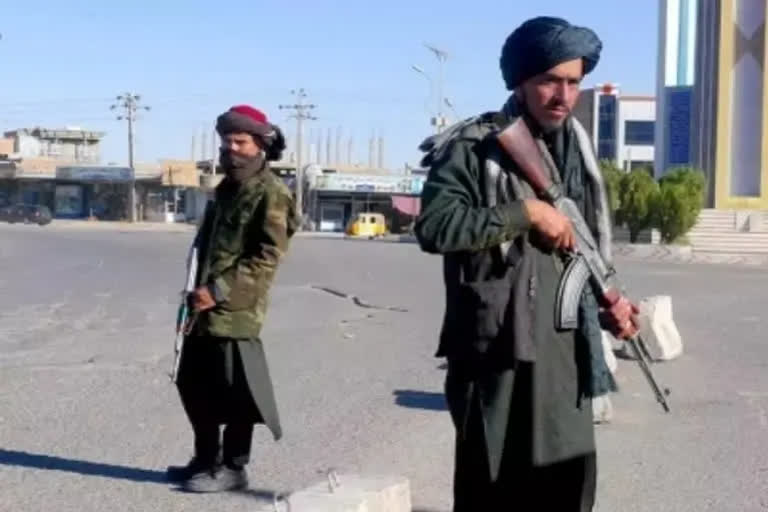United Nations: A change in the name of the Al-Qaeda in the Indian Subcontinent (AQIS) magazine "suggests a refocusing" of the terror group from Afghanistan to Kashmir, a UN report has said. The 13th report of the Analytical Support and Sanctions Monitoring Team submitted pursuant to resolution 2611 (2021) concerning the Taliban and other associated individuals and entities constituting a threat to the peace stability and security of Afghanistan was released on Saturday.
The report said that being subordinate to the Al-Qaeda core, the AQIS is maintaining a low profile in Afghanistan, where the majority of its fighters are located. AQIS is reported to have 180 to 400 fighters, with estimates by member states inclining toward the lower figure. "Fighters included nationals from Bangladesh, India, Myanmar and Pakistan and were located in Ghazni, Helmand, Kandahar, Nimruz, Paktika and Zabul Provinces.
It also added that AQIS capabilities are assessed as "still weakened from losses as a result of the October 2015 joint United States-Afghan raid in Kandahar's Shorabak district. AQIS has also been forced by financial constraints to adopt a less aggressive posture.
As with Al-Qaeda core, new circumstances in Afghanistan may allow the group to reorganise itself. The 2020 name change of the AQIS magazine from Nawa-i Afghan Jihad to Nawa-e-Gazwah-e-Hind suggests a refocusing of AQIS from Afghanistan to Kashmir. The magazine reminded its readers that al-Zawahiri had called for jihad in Kashmir following the Da'esh Sri Lanka attacks of April 2019, the report said, nine months after the Taliban seized power in Afghanistan in August last year.
In the report, member states also reported that interdictions of Afghan-origin drugs have increased significantly in the second half of 2021, suggesting less effective counter-narcotics efforts within Afghanistan or heightened activity in anticipation of a ban. "Three tonnes of Afghan-origin heroin were seized in India in September 2021. One member state reported that smuggling via the Islamic Republic of Iran to Turkey and Europe has increased by up to 50 per cent since the Taliban assumed power.
It said the Islamic State in Iraq and the Levant-Khorasan (ISIL-K) concentrated their attacks on the Taliban after the August 15 takeover of Afghanistan but their activity declined towards the end of 2021, possibly because of the winter weather.
Also read: India briefs high-level UN team on concerns over terrorism in South Asia
Neither ISIL-K nor Al-Qaeda is believed to be capable of mounting international attacks before 2023 at the earliest, regardless of their intent or of whether the Taliban acts to restrain them. But their presence, and the presence of many other terrorist groups and fighters on Afghan soil, gives cause for concern to the neighbouring member states and the wider international community, the report said.
It added that the larger strategic direction of ISIL-K whether they mean to focus on Afghanistan or prioritize the revival of an external operational capability is unclear. Regardless of ISIL-K (and Al-Qaeda) intent, it will take time to achieve such a capability. Member States expect no attacks directed from Afghanistan until 2023 at the earliest, although cross-border attacks remain a possibility.
The 13th report of the Analytical Support and Sanctions Monitoring Team of the Taliban Sanctions Committee is the first one since the August 15 takeover of Kabul by the Taliban. It notes that the period between then and April 2022 has seen the Taliban consolidate control over Afghanistan, appointing 41 United Nations-sanctioned individuals to the Cabinet and other senior-level positions in their de facto administration. They have favoured loyalty and seniority over competence, and their decision-making has been opaque and inconsistent.
India's Permanent Representative to the UN Ambassador T S Tirumurti, in his capacity as Chair of the Taliban Sanctions Committee, also known as the 1988 Sanctions Committee, transmitted the report to be "brought to the attention of the members of the Security Council and issued as a document of the Council." The report notes that the relationship between Al-Qaeda and the Taliban remains close and is underscored by the presence, both in Afghanistan and the region, of Al-Qaeda's core leadership and affiliated groups, such as Al-Qaeda in the Indian Subcontinent.
The report notes that the core Al-Qaeda leadership under Aiman Muhammed Rabi al-Zawahiri is reported to remain in Afghanistan, more specifically, the eastern region from Zabul Province north towards Kunar and along the border with Pakistan. Since August 2021, al-Zawahiri has appeared in eight videos. Alluding to the hijab row in India, the report said that in the most recent such video of al-Zawahiri, released on April 5, by Al-Qaeda's As-Sahab Media Foundation, al-Zawahiri references the defiance of an Indian Muslim female in front of men protesting the hijab, an event that went viral in early February 2022.
The video provided the first conclusive current proof of life for al-Zawahiri in recent years. The pace of recent communications suggests that he may be able to lead more effectively than was possible before the Taliban takeover of Afghanistan, it said. Member State estimates of ISIL-K strength range between 1,500 and 4,000 fighters, concentrated in remote areas of Kunar, Nangarhar and possibly Nuristan Province. Smaller covert cells are thought to be present in the northern provinces of Badakhshan, Faryab, Jowzjan, Kunduz and Takhar.
Geographical distance and ethnic differences (Afghan and Pakistani Pashtuns in the east and ethnic Tajik and Uzbeks in the north) may mean that various ISIL-K presences around Afghanistan struggle to coordinate with each other, as has been the case historically. (PTI)



